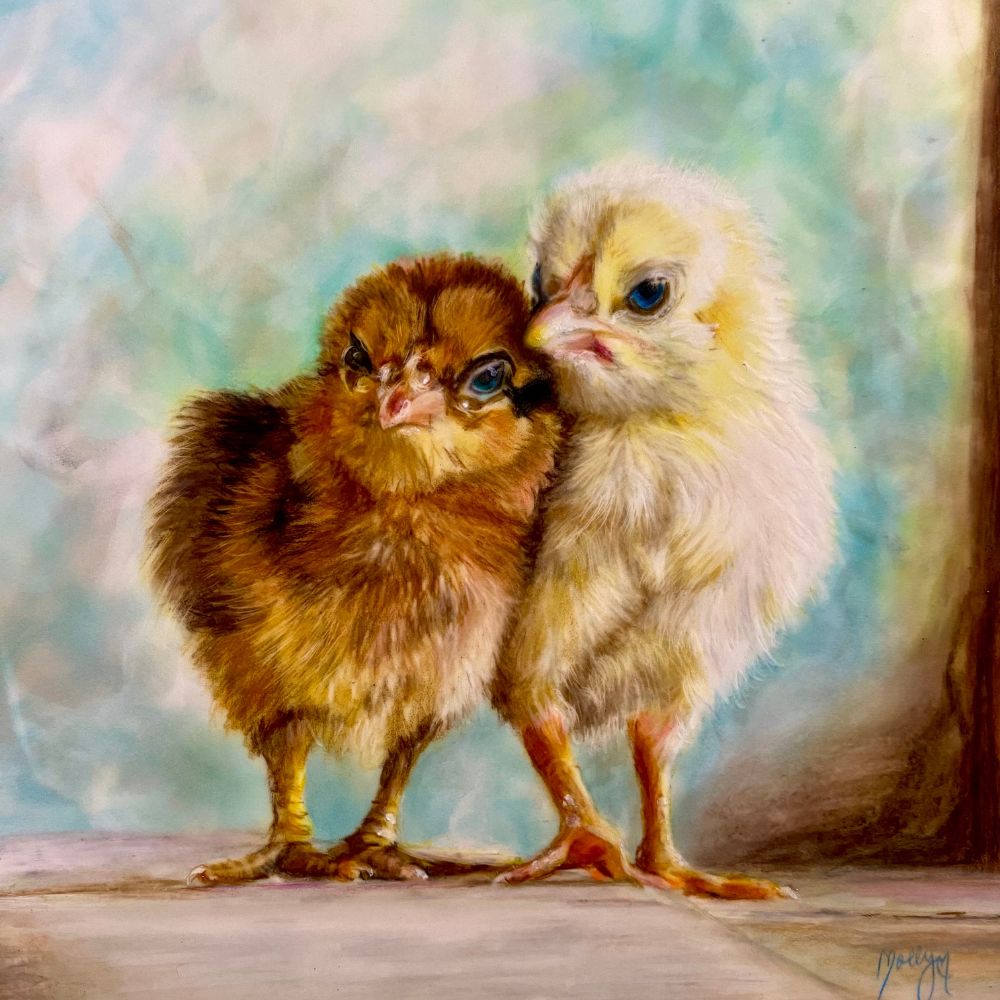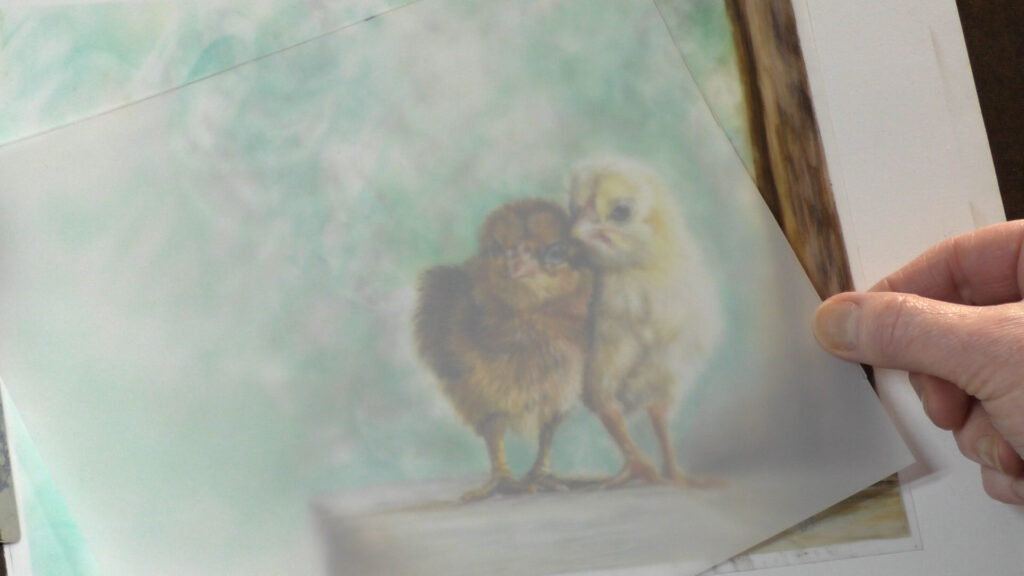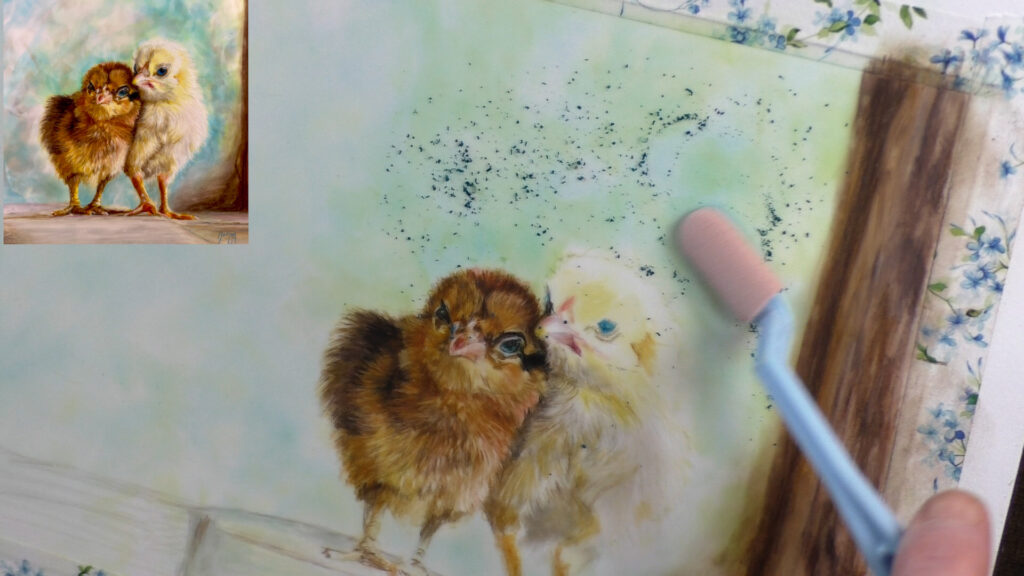
on Drafting Film
Hello Fellow Artist! 🎨
When it comes to colored pencil artwork..
✔︎ Choosing the right drawing surface plays a crucial role in the final outcome.
One surface that has gained popularity among artists is Drafting Film by Grafix.
👉 In this blog post, we will explore the pros and cons of using drafting film as a drawing surface for colored pencils, helping you make an informed decision and unleash the full potential of your colored pencil artworks. ✍️

❀ Pros of Using Drafting Film:
- Smooth and Non-Absorbent Surface:
Drafting film offers an ultra-smooth surface that allows colored pencils to glide effortlessly. Unlike traditional papers, drafting film is non-absorbent, preserving the vibrancy of your colored pencil pigments and maintaining sharp details. The smoothness enables seamless blending and layering techniques, resulting in stunning, smooth gradients. - Excellent Erasability:
Mistakes happen, and having the ability to correct them without damaging the artwork is invaluable. Drafting film allows for easy erasing and lifting off of colored pencil marks, giving you the freedom to make adjustments or refine details. This erasability feature is particularly beneficial when working on intricate or highly detailed pieces. - Durable and Long-Lasting:
Made from polyester, drafting film is exceptionally durable and long-lasting. It can withstand heavy layering, burnishing techniques, and erasing without tearing or wearing down. This durability ensures that your artwork remains intact over time, making it a suitable choice for preserving your creations. - Ideal for Detailed Artworks:
If you enjoy creating artworks with intricate details and precise lines, drafting film is an excellent option. The smooth surface allows for better control over your colored pencils, enabling you to achieve fine lines, subtle textures, and intricate patterns with ease. This makes drafting film particularly appealing for artists who specialize in hyperrealism or highly detailed renderings, such as pet portraits.

I’m blending shavings of colored pencil on drafting film for this background. To see the 10 minute YouTube tutorial click here! 🔴
✣ Cons of Using Drafting Film:
1. Lack of Tooth:
One of the drawbacks of drafting film is its smoothness, which means it lacks the tooth or surface texture found in traditional papers. The absence of tooth can make it challenging to build up multiple layers of colored pencil and create textured effects. (which is where my love/hate relationship stems from!)
However, artists have found ways to overcome this limitation by using techniques like burnishing or layering with solvents to achieve unique textures and effects.
I used Gamsol, OMS (odorless mineral spirits) with a Q-tip to lightly blend the pigment on the drafting film. See image.

2. Vulnerability to Scratches:
While drafting film is durable, it is still susceptible to scratches and scuffs. Careful handling is essential to avoid accidental damage to your artwork. Consider using protective sheets or a backing board to prevent scratches and extend the lifespan of your drawings on drafting film.
3. Limited Variety of Surfaces:
Unlike traditional papers that offer a wide range of textures and finishes, drafting film typically comes in a few variations of transparency, such as clear, matte, or frosted, even double-sided. This limited variety of surfaces may not suit the preferences of all artists. However, drawing on the backside can be helpful when you need achieve deep dark values.
4. Cost:
Compared to some traditional drawing papers, drafting film can be relatively more expensive, especially when working on larger-scale artworks. However, many artists find the benefits and longevity of drafting film worth the investment considering the quality and durability it offers.
👉 One more thing: Dura-Lar is not the same as the drafting film that I’m using in the photos. I’m using Grafix Double sided matte drafting film. I’ve found that Dick Blick’s has the best prices and choices of sizes to choose from (not sponsored). 🌻
What’s the Difference?
Here is the difference between the two explained on the company Grafix’s website:
Matte Dura-Lar is only available in .005”, coated on two sides with an economical grade coating. Drafting Film is available in .003”, .004”, .005”, .007” coated one or two sides and is a professional grade coating.
Is Dura-Lar archival? Dura-Lar is a polyester based film known for its clarity and stability. It has a high heat tolerance, will not tear or discolor and is archival.
📣 Pigment colors differ between the two surfaces! Here is a test that I did of Dura-Lar and Drafting Film with the same pencils. Note the greys are lighter in color on the Dura-Lar.

Conclusion:
Choosing the right drawing surface is a personal decision that impacts the outcome of your colored pencil artwork. Drafting film provides several advantages, such as a smooth surface for effortless gliding, excellent erasability, and long-lasting durability. However, it’s essential to consider the lack of tooth, vulnerability to scratches, limited surface variety, and the potential cost when using drafting film.
Thanks for visiting my blog I hope it was helpful for you! Please comment and let me know your experiences with drafting film. 🤗
Happy Drawing, Fellow Artists!
Molly 🌻
🎨 P.S. If you’d like more colored pencil techniques plus watercolor techniques, Join me on my Patreon Page! Patreon.com/MollysFineArt
📣 June discounts on all courses! Molly’s Blueprint Beginner’s Colored Pencil Course-Every Colored Pencil technique you need to know plus more! 🔴
